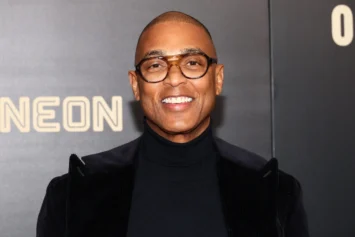Vice President Kamala Harris placed added focus on the need for more science, technology, engineering and math at Historically Black Colleges and Universities across the country during an HBCU Week speech she gave at Virginia’s Hampton University on Sept. 10.
But encouraging more Black students into STEM-related careers is easier said than done.
“We know there are Black and brown kids who want to go into these fields, but we have to be aware of these invisible shackles,” said Netia McCray.
McCray, 31, is the founder and executive director of Mbadika, a nonprofit organization focused on STEM outreach for students, particularly students of color. McCray founded Mbadika while she was still a student at the Massachusetts Institute of Technology in 2010. She knows firsthand the challenges Black STEM students face in the classroom.
“On that other side is that dark underbelly, in which you always understand there are good intentions and institutions, organizations and companies that truly believe in meritocracy, and that the best will rise up and be part of their ranks do not see the invisible barriers that you are painfully aware of as a minority. … Then you start to look at all the challenges you have explaining why you weren’t exposed to this in middle school or high school and how those are invisible shackles to faculty and colleagues,” said McCray.
Physics professor Dr. Lewis Johnson is the associate provost of student succession and strategic initiatives at Florida Agricultural and Mechanical University in Tallahassee, Florida. He says student enrollment in STEM at FAMU has slowly increased, but he understands more work is needed to not only attract STEM students, but also keep them.
“We have tutorial labs, we have mentors, special classes for STEM majors, and we have lots of grant efforts,” Johnson said.
FAMU has also adjusted its freshman curriculum so students are introduced to STEM-related material early on. Johnson says added emphasis has been placed on math courses to address any deficiencies that could arise later in students’ academic careers, especially in STEM courses.
“Students come in with a lot of different classes from high school and they may be ready for this math on paper, but we do another test on them to see where they are. So by instituting the math placement test, we really improved the pass-fail rate of some of those freshman math courses,” he said.
A 2019 study from the journal Educational Researcher found that Black students have significantly higher rates of switching majors away from STEM when compared against other groups.
The journal found that some 40 percent of African-American students will switch majors, compared with 37 percent of Latino students and 29 percent of white students. The researchers also pointed to white privilege, micro-aggressions and students of color feeling excluded as contributing factors for the disparity.
“We do know there are barriers for Black students, Hispanic and Latino students, and women as it comes to A, seeing people who looks like them and wondering if this is really for me. And also some of the less-spoken-about messages is this something you should pursue and let me guide you through to something different, so there are some pipeline issues,” said Rick Clark, Georgia Tech director of undergraduate admission.
Although not an HBCU, Georgia Tech has also been more intentional about addressing disparities in STEM. Georgia Tech has invested more in its outreach programs and ensuring professors of color are represented.
“The number of Black students who do retain in STEM fields from point of entry to graduation is dismal and I think there are variety of reasons for that,” Clark said. “Mainly —and I think higher-ed has to do a better job — in the professorship and making sure that Black students see themselves as able to A, belong, and B, succeed in that area.’
Jason Allen, the director of Edlanta Student Coalition says student preparedness at the grade school level is lacking, which puts some Black students at a disadvantage well before they even consider college.
Allen has worked in education for more than 15 years as a teacher, education blogger and community advocate. He’s remained cautiously optimistic given the steady improvement in Atlanta Public Schools’ graduation rate from 2012 to 2020.
“In Atlanta over the eight years there has been an improvement in the graduation rate from 50 percent to 81 percent, but how many of those students were ready for careers and the higher institutions of learning that they matriculated into, and a lot of those students were not because we did not prepare them the way that we should,” Allen said.
Allen believes the reason some Black students are not fully prepared for college and STEM-related careers is because of lower literacy rates among Black families. In Georgia, cuts to reading teacher positions and limited exposure to STEM-related careers at a young age are also contributing factors.
“We have some gaps we have to fill within our workforce, but also culturally we have to make sure that we are showing and exposing our students to different areas and careers they are not even speaking or thinking about,” Allen added.
McCray feels that’s following the racial reckoning of 2020 an added focus on equity in education offers signs of hope. She believes the private sector has figured out more must be done to expose Black youth to STEM. She hopes the educator sector becomes more aggressive in doing the same.
“And you start to realize private industry has realized something that education, nonprofit and philanthropic spaces haven’t figured out, there’s an end-game coming if we do not resolve these issues,” McCray said.
“When we have private industry saying it’s in our best interest to figure out the pipeline and helping Black people into STEM careers because them staying in essential workforce or work-related jobs isn’t going to help propel the U.S. or the world forward.”


